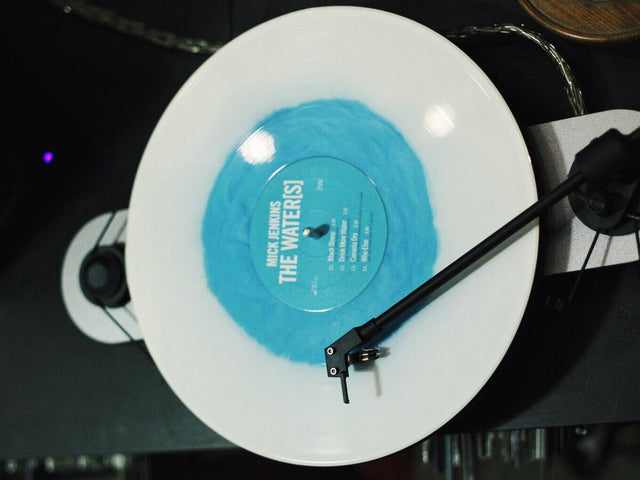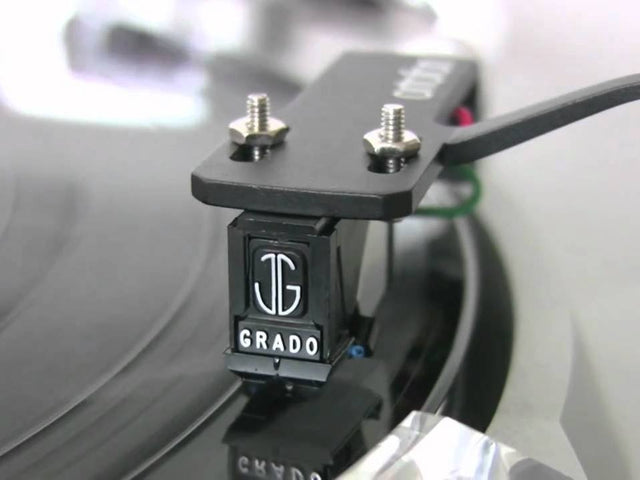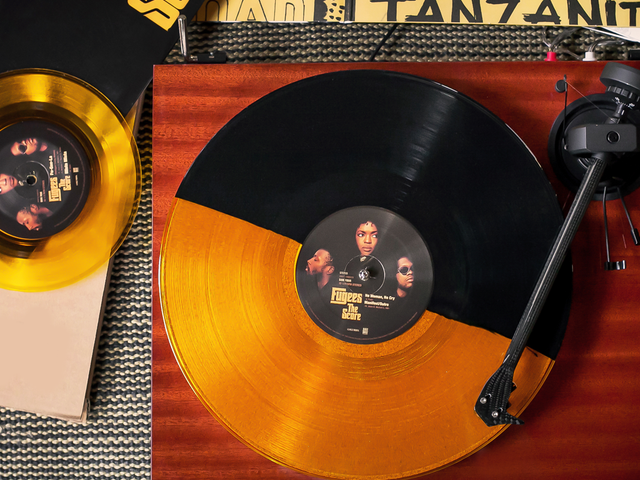Einer meiner Lieblingsaspekte der Vinyl-Renaissance ist das neue Geräteangebot, das in verschiedenen Preisklassen erhältlich ist. Wenn ich mir die riesige Auswahl an Optionen ansehe, scheint es, als ob die dunklen Tage von 2006 (das schlechteste Jahr für den Vinylverkauf in der Geschichte) nie stattgefunden hätten. Neue Angebote kommen sowohl von neuen Firmen als auch von etablierten Marken auf den Markt – und eine der renommiertesten Marken – Mobile Fidelity Sound Labs (MoFi) trat nach vier Jahrzehnten, in denen sie einige der gefragtesten Wiederveröffentlichungen angeboten hat, in den Gerätesektor des Hobbys ein.
About the size of three decks of cards laid side by side, their entry level phono preamplifier—the $249 American-made StudioPhono—was designed fresh from the ground up by the MoFi design team led by Tim de Paravicini. While not a household name, if you've heard a MoFi Original Master Recording, you've heard his wizardry, part of the magic that makes a MoFi reissue special. Sound quality like that can't be purchased off the shelf: MoFi uses custom proprietary electronics in their studios that were designed by de Paravicini. He also founded his own high-end audio company, EAR Yoshino and designed for Musical Fidelity, Quad and Luxman. It appears that MoFi is surrounding itself with some of the best audio designers in the business.
What A Phono Preamplifier Does And Why It's Required
A phono preamplifier has a tough job—probably the toughest in any system. It needs to amplify the minuscule signal coming from the cartridge to a level suitable for an amplifier or receiver to work with. Just as importantly, it must accurately equalize that signal. You see, records have the bass cut way down in volume when the lacquer is cut. Without a large bass cut, records wouldn't work: sides would be ridiculously short and no cartridge would be able track it. On top of this, a phono preamplifier must be quiet and match well with a variety of cartridges. It's the audio equivalent of juggling with chainsaws while blindfolded. How well a phono preamplifier does these tasks has a direct and audible effect on how good records can sound.
Even those who have a phono stage built into their amplifier can benefit from a separate unit. Many amplifiers have basic phono preamplifiers built in as a convenience rather than for high performance. An amplifier’s circuits are an electrically noisy environment. Moving the phono circuits out of the amplifier can drastically reduce or eliminate noise, hum and hash. It's the musical difference between steak at an all you can eat buffet or fine aged beef at an upscale steakhouse.
More advanced phono preamplifiers like the StudioPhono will also give the ability to match the cartridge ideally. Cartridges are not “one-size-fits-all." Going beyond the usual MM/MC switch found on most units in this price range, the StudioPhono has a bank of DIP switches on its underside. These switches allow the StudioPhono to be fine tuned to the cartridge far more precisely than a basic MM/MC switch. It's likely to match well with nearly any cartridge available, including low output wood-bodied Grado models which require an unusual combination of settings to sound right. In other words, some serious thought has gone into the available adjustments, and the StudioPhono has the flexibility to remain in place as your system improves over time.
Listening
I started listening right after putting the StudioPhono in line between my MoFi Ultradeck fitted with an UltraTracker cartridge and Rogue Audio Pharaoh integrated amp. Speakers are Magnepan 1.7 while B&W P7s handled headphone duties. While it may seem imprudent to drop a $249 phono preamplifier into $8,000 worth of components, the StudioPhono acquitted itself admirably. On hand for comparison were the iFi Audio iPhono 2 as well as the phono stage built into the Pharaoh.
Before going there, I'd like to discuss the two buttons on top of the StudioPhono’s casework: mono and subsonic. Mono buttons are often sadly omitted from phono preamplifiers; every outboard phono stage should have one. While I didn't hear a big difference with musical content when playing mono records, it reduces groove noise noticeably. Mono recordings have musical content in only the horizontal plane while stereo recordings require the cartridge to output both horizontal and vertical signals. The only signal in the vertical plane on a mono record is noise. Pressing the mono button sums left and right, blocking the vertical signal, therefore blocking noise. Both used finds and new reissues benefit. Speaking of used finds, sooner or later, you'll come across some bad words: “Electronically Reprocessed for Stereo” which Capitol called “Duophonic.” In other words, fake stereo. If you have these in your collection, just press the mono button until a mono copy can be found.
The subsonic button blocks signals below 20Hz (the low limit of human hearing) from reaching the amplifier. If you've ever seen a woofer pulsate wildly while playing a record but can't hear anything, this is subsonic energy. It makes your amplifier and speakers work hard for nothing. I didn't use the subsonic filter, but I heard no difference between using the filter or not, just as it should be.
Listening to many genres of music through the StudioPhono, two words kept coming to mind: transparency and clarity. It does seem to highlight the midrange just a bit, so that if there's a piano buried deep in the mix, you'll hear it. Well-recorded acoustic guitar is amazing—there's a sense of the artist actually playing, as opposed to just hearing the sound coming from a wooden box. Women’s vocals? Really nice—and way better than expected for $249. The bit of accent on the midrange isn't a bad thing—that's where most of the music is.
I found myself listening to lots of mono albums through the StudioPhono, both current reissues as well as original vintage pressings. Where a lesser phono stage may present the music as a blob centered between the speakers, that wasn't the case with the StudioPhono. Mono done right is a joy, and the StudioPhono gave me an additional appreciation for it. Well-done mono begs the question for the existence of stereo—you can still get an excellent sense of recorded space with mono.
Listening to well-recorded live albums or jazz, it was easy to hear exactly where the performers were on the stage, as well as the depth of the stage—how far back the drummer was from the performers at the front of the stage.
Through the years, MoFi has had surprisingly few mastering engineers. One of the earliest engineers was the late Stan Ricker. I own quite a few early MoFi releases, and they all sound fantastic, even if I always thought they had a bit of a bass boost. Maybe Ricker did a bit of additional equalization during mastering or maybe it was due to the electronics MoFi used over 35 years ago, but those records have a sound of their own—a sonic signature. One night I was listening to the three album set of Cream’s reunion performances from 2005. The set sounds fantastic, both the band’s performance as well as the pressing. It occurred to me that it sounded exactly like an early MoFi. But it wasn't a MoFi, and the current pressings and the early pressings sound nothing alike—the current ones are better, although they lack the warmth of a Stan Ricker master. The punchline? Stan Ricker mastered the 2005 performances for vinyl. The StudioPhono led to a fun discovery, as well as answering a question.
If you are looking for a phono stage to “do” or “fix” something, that's not the StudioPhono. It won't add anything. If anything, it'll remove a layer of noise that may have previously gone unnoticed.
Comparisons
Both the MoFi StudioPhono and the iFi Audio iPhono 2 easily bested the built in phono stage in my Rogue. Both were far quieter and sounded more realistic. Comparing the StudioPhono to the iPhono 2 was far more interesting. The iPhono 2 costs twice as much, so it sounds twice as good, right? Not so—I'm not even sure what “twice as good” means. They are actually so close in performance that if I didn't know which was connected (because I connected them) I couldn't reliably tell which was which. Careful listening did show differences, however. The iPhono 2 plays ever so slightly deeper in the bass, and has a bit more extended high end as well. The extended high end is a double-edged sword: the iPhono 2 also slightly accentuated surface noise.
While neither unit had any hum whatsoever, the iPhono 2 was noticeably quieter in regards to hiss with the arm lifted and the amplifier's volume control cranked unrealistically high. But I don't listen to my records with the arm lifted, and the volume control was rotated farther than it has ever been while listening to music. While playing music at any volume level, the StudioPhono was very quiet.
Keep in mind, these observations were in the context of a well-matched $8,000 system. In a more modest setup, it may be that the two are completely indistinguishable, which is high praise indeed for a budget priced component. That said, the StudioPhono made itself right at home in my system, and I could happily live with it long term.
Conclusion
If you are in the market for a very reasonably priced yet high-performance phono stage, the American-made StudioPhono should be at the top of your shopping list. It performs far better than its price indicates and will match well with a wide variety of cartridges. Most importantly, it doesn't have a “sound”—it's just a conduit for musical enjoyment.
Nels Ferre spent 10 years in audio retail and has previously written audio reviews for numerous online publications. He has an obsession with all things Beatles and Jethro Tull.
Trete dem Club bei!
Jetzt beitreten, ab 44 $Exclusive 15% Off for Teachers, Students, Military members, Healthcare professionals & First Responders - Get Verified!











